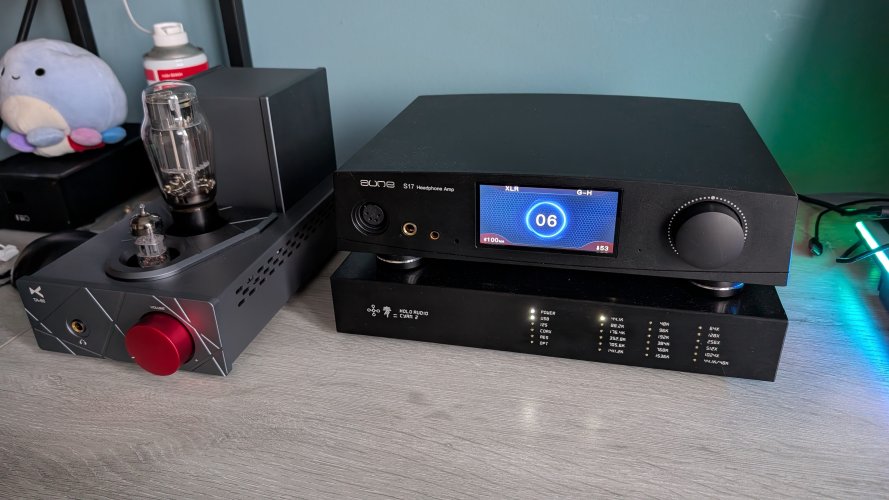Thanks everyone for your continued attention and your feedback

1. Regarding measurements:
Here are the measurements on our website:
The S17 Pro has done a fairly good job keeping the low noise floor in the state of class-A. And each unit undergoes hours of aging and QC before leaving the factory.
Many of you should have a lot of experience with amplifiers and other audio products. Just by plugging in headphones, you are able to judge the device's noise level.
If any anomalies occur, these might be the possible causes:
1) If you are doing tests on your own, please pay attention to the grounding loop of the testing instrument, as this can lead to abnormal test results.
2) 50Hz interference from mains power.
3) Abnormalities in the S17 Pro.
2. High-frequency self-excitation:
The development process of the S17 Pro includes a stage for self-excitation inspection. We conducted tests using standard cables, and no self-excitation was detected.
The S17 Pro is designed with several special features:
1) It is a class-A headphone amp with relatively large output current. It actually outputs double the current with two pairs of transistors.
2) The tuning is transparent and clear type within class-A amplifiers, with excellent high frequencies. We believe the S17 Pro users can feel it. It has a relatively wide frequency response bandwidth. This setting has been reviewed by sound engineers and has also passed hardware stability tests.
If self-excitation occurs:
1) Please check if the headphone cable has relatively large parasitic capacitance and inductance, as this may cause anomalies.
2) The S17 Pro operates in a multi-transistor parallel and class-A high current working state. If one of the transistors has an abnormal amplification factor, self-excitation may occur, but the probability is very low.
If you don't experience noise or abnormal heating during actual use, please don't worry. The S17 Pro is a class-A headphone amp with professional and aesthetic tuning. It is not just an electronic device; it is a meticulously crafted product by tuners and engineers with love and passion

If your device experiences any anomalies, please refer to the information above and contact us.




























